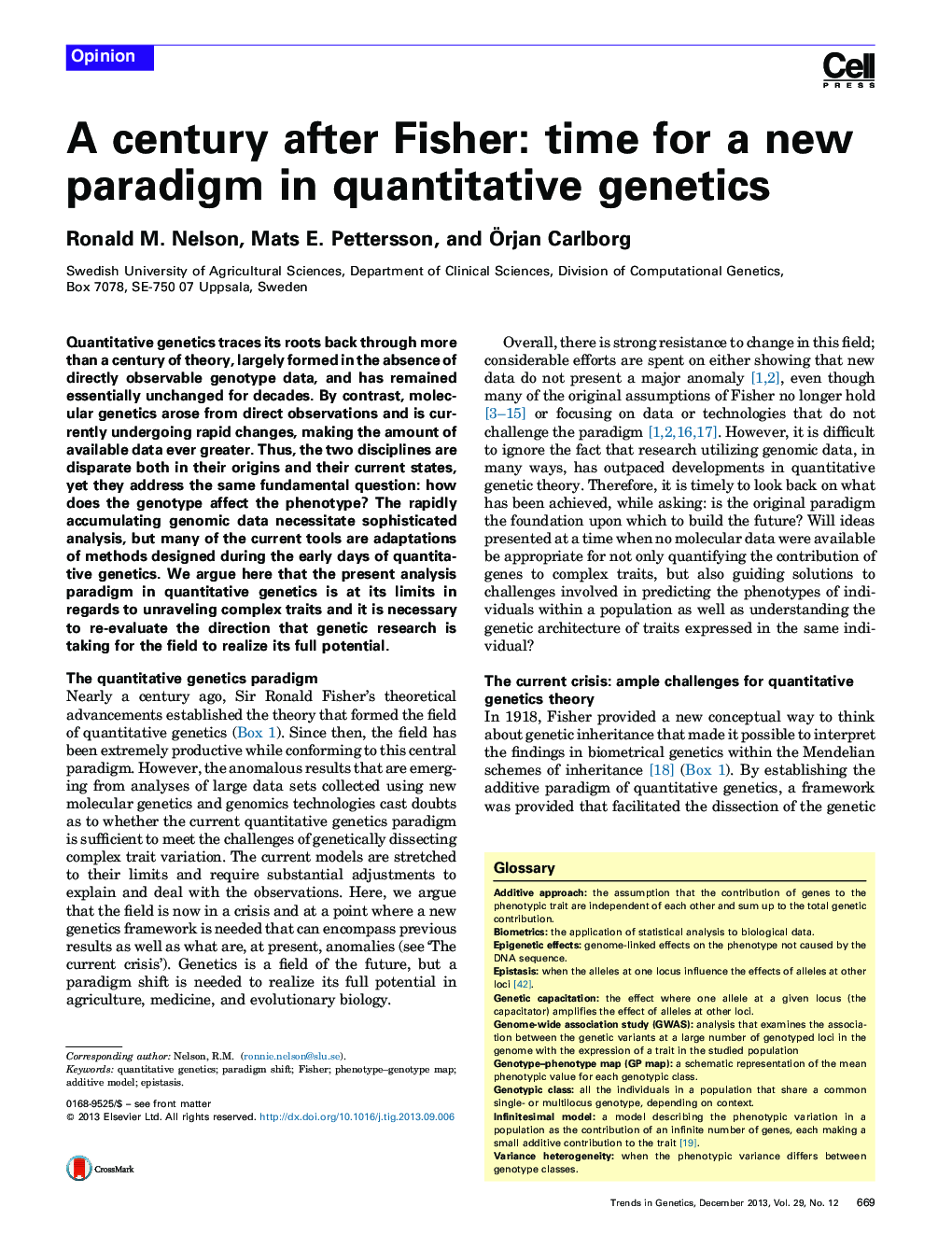| Article ID | Journal | Published Year | Pages | File Type |
|---|---|---|---|---|
| 2824848 | Trends in Genetics | 2013 | 8 Pages |
•We present a challenge to the Fisherian quantitative genetics paradigm.•The natural state of biological systems cannot be fully captured with an additive model.•We urge researchers to design experiments that can detect nonadditive genetic interactions.•It is important to keep an open mind when selecting an analysis method.
Quantitative genetics traces its roots back through more than a century of theory, largely formed in the absence of directly observable genotype data, and has remained essentially unchanged for decades. By contrast, molecular genetics arose from direct observations and is currently undergoing rapid changes, making the amount of available data ever greater. Thus, the two disciplines are disparate both in their origins and their current states, yet they address the same fundamental question: how does the genotype affect the phenotype? The rapidly accumulating genomic data necessitate sophisticated analysis, but many of the current tools are adaptations of methods designed during the early days of quantitative genetics. We argue here that the present analysis paradigm in quantitative genetics is at its limits in regards to unraveling complex traits and it is necessary to re-evaluate the direction that genetic research is taking for the field to realize its full potential.
